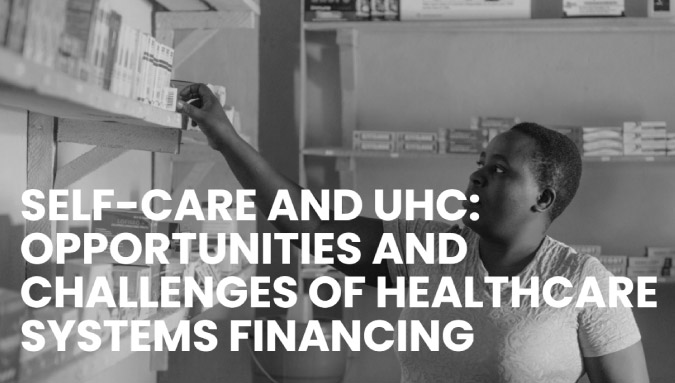FAH is a partnership established in 2016 that works with governments on financing strategies for primary and community health systems that operate at scale and are financially sustainable over time. To learn more about our work, please visit our online knowledge repository Community Health Financing Hub.
By Nelly Wakaba, Country Engagement and Support Director, Financing Alliance for Health
Self-care – defined by the World Health Organization as “the ability of individuals, families and communities to promote health, prevent disease, maintain health, and to cope with illness and disability with or without the support of a healthcare provider” – is not a new phenomenon. Care to sick individuals has always been, from time immemorial, provided primarily by the self and family in most societies.
While COVID-19 has illuminated the devastating impact of global health inequalities, health systems in low and middle-income countries (LMICs) have always been oriented to curative care, while failing to reach remote areas where disease occurs. Self-care could improve the efficiency of healthcare delivery by including users in their own care, thereby increasing people’s access to essential health services that they would otherwise not be able to access through health providers because of stigma, discrimination, distance, or cost.
Nevertheless, for most self-care interventions to remain safe and enhance access, targeted support, especially at the community level is vital. As trusted members of the communities they live in, trained community health workers (CHWs) could play a key role in educating people on what to do, how and when to do it in a manner that takes into account their financial scope.
What are some of the opportunities and challenges for financing healthcare systems as it relates to self-care?

Opportunities
Financing self-care, like any other health intervention, is a continuum rather than a ‘one-off’ ‘event’. For self-care to be financed sustainably, a blend of both top-down and bottom-up approaches could be considered:
Top-down approaches: These could include optimizing funding awarded to countries for specific health projects and in-country funding sources such as government subsidies, third party payers such as medical insurance companies, partial out of pocket payments and private provider funding which could include loans, equity and other forms.
Bottom up approaches: One great opportunity for financing self-care could include leveraging CHWs to reach marginalized, hard-to -reach and vulnerable populations as CHWs are trusted ‘lay educators’ that can train the communities at the last mile. This results in reduction in training costs, saves the healthcare practitioners’ time and saves this population segment from travelling to health facilities. For instance, the case of Peru, using trained community women also called ‘’HOPE’’ ladies on self-testing for human papilloma virus (HPV).
Alternatively, innovative cross-subsidization could be considered, where better-placed individuals access self-care products at a marginally higher price, so that the disadvantaged communities can access them at a much cheaper price. For example, in Peru, where women of higher economic background buy the tests for HPV at a slightly higher cost than others to create a sustainable platform to offer free testing to women with less resources. Furthermore, digitally enabled self-care interventions could be leveraged to create opportunities for attracting private sector investments in health care.
Challenges
In most instances, self-initiated often means self-financed, and as a result, most self-care interventions including tools, supplies and medications receive limited domestic funding as most domestic governments have yet to make significant investments, partly attributable to dwindling external assistance. There is also the risk of fragmented funding as most global health funding and initiatives target parallel health programs yet self-care interventions need to be integrated with other health programs to realize cost savings and economies of scale.
The Way Forward
As we strive to achieve UHC, prevent future pandemics and accelerate progress towards attainment of global health targets, we must prioritize equity – investing more in promising health interventions such as integrated self-care and community health systems through a mix of financing approaches to ensure that all needs are met.

